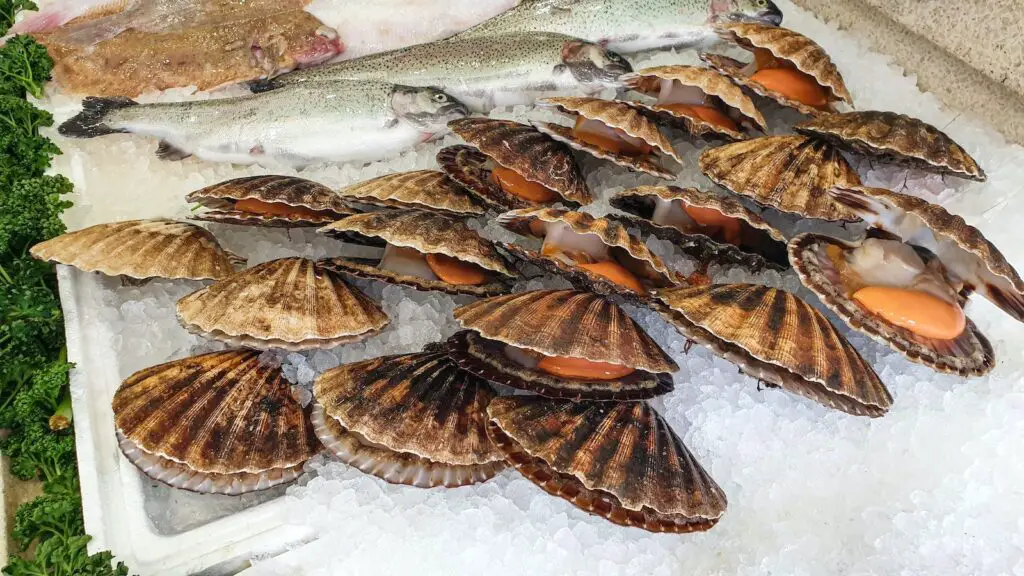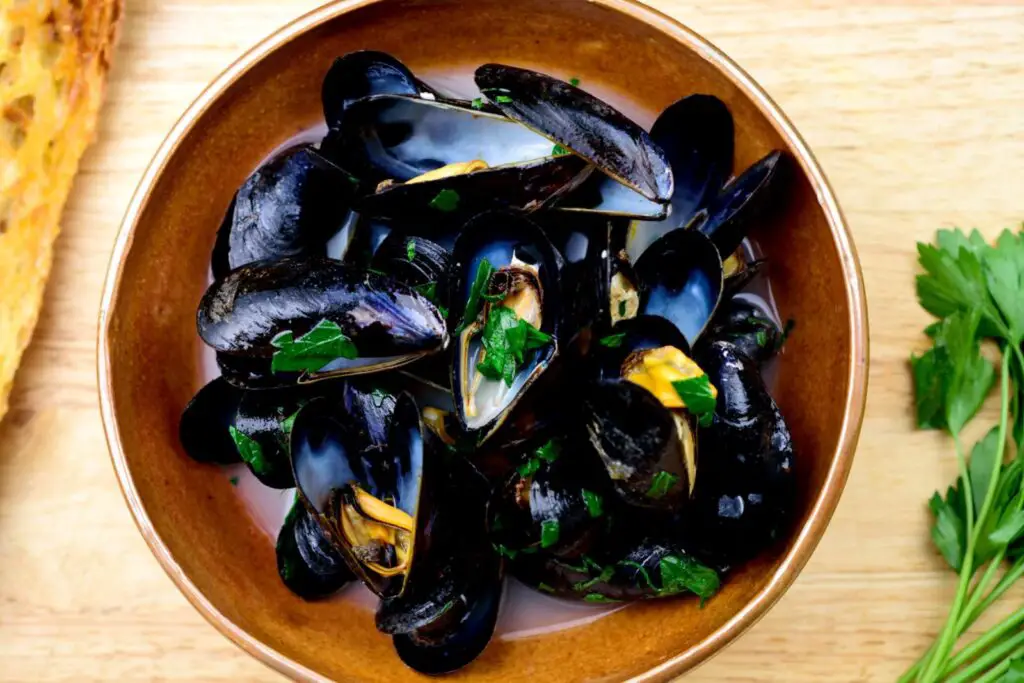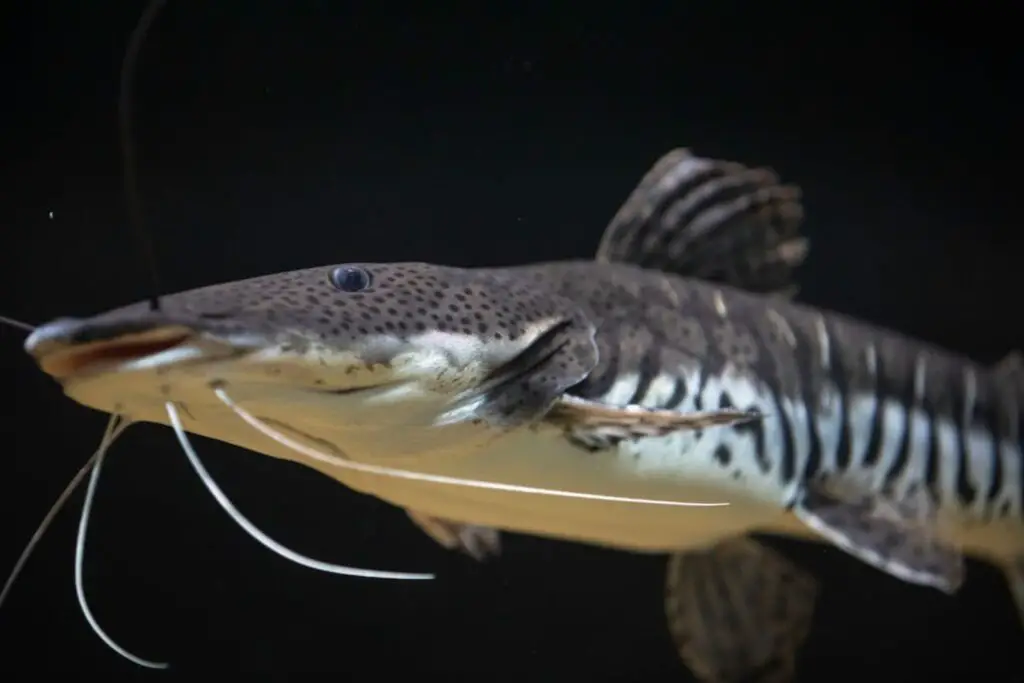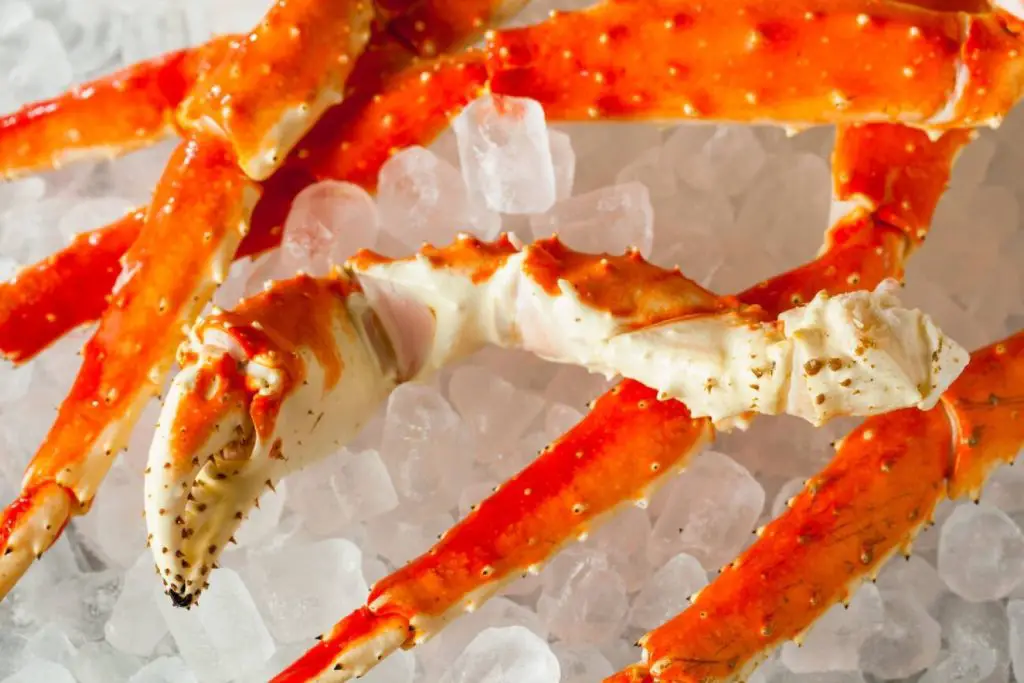
Snappers are a popular type of fish known for their firm, white flesh and mild flavor. Whether you’ve caught snappers yourself or purchased them fresh from the market, freezing is a great way to preserve their taste and texture for future enjoyment. By following a simple step-by-step process, you can effectively freeze snappers and ensure they remain delicious and ready to use whenever you desire. In this article, we will provide you with a comprehensive guide on freezing snappers, allowing you to savor their flavor even when they are not in season.
Here’s a guide on how to freeze snappers:
Step 1: Select fresh snappers
When it comes to freezing snappers, choosing fresh fish is crucial for maintaining their quality during the freezing process. Fresh snappers not only taste better but also retain their texture and flavor after freezing. Here’s why it’s important to select fresh snappers:
- Clear, bright eyes: The eyes of a snapper can tell you a lot about its freshness. Look for snappers with clear, bright eyes as they indicate that the fish is still in good condition. Cloudy or dull eyes are often a sign of deterioration and should be avoided.
- Shiny skin: The skin of fresh snappers should have a glossy appearance, indicating that it is well hydrated and has not dried out. Avoid snappers with dry or flaky skin, as this can be a sign of age or improper storage.
- Pleasant smell: Fresh snappers should have a mild, briny scent reminiscent of the ocean. A strong or foul odor, on the other hand, can indicate spoilage or bacterial growth. Trust your sense of smell and avoid snappers with any off-putting odors.
Dull or cloudy eyes, discolored skin, or a strong odor are warning signs that the snapper may not be fresh and could have started to spoil. Consuming spoiled fish can lead to foodborne illnesses and negatively impact the taste and texture of the snapper after freezing.
Step 2: Clean and gut the snappers
Cleaning and gutting the snappers is an essential step before freezing them. This process removes any scales, entrails, or impurities that can affect the quality and taste of the fish. Here’s why it’s important to clean and gut the snappers:
- Scales: Snappers have scales on their skin that need to be removed before freezing. Scales can be unpleasant to eat and can also affect the texture of the fish. By removing the scales, you ensure a smoother eating experience and prevent any unwanted texture on the cooked snapper.
- Entrails: The entrails, also known as the internal organs, must be removed from the snapper. This includes the stomach, intestines, and other organs. These parts can spoil quickly and may release enzymes that can affect the flavor and quality of the fish. By gutting the snappers, you eliminate the risk of the fish spoiling during freezing and storage.
- Impurities: Cleaning the snappers under cold running water helps remove any remaining dirt, slime, or other impurities that may be present on the fish. This step ensures that you are starting with a clean and sanitary product, reducing the chances of contamination during freezing and storage.
To clean and gut the snappers, start by rinsing them thoroughly under cold running water. This helps remove any loose scales, slime, or debris. Then, use a sharp knife to make a clean cut from the vent, located near the tail, to the base of the snapper’s head. Take care to avoid puncturing the intestines during this process. Once the fish is opened, remove the entrails and any other organs, making sure to clean out the cavity completely. Rinse the snapper again to ensure it is free from any remaining impurities.
Can I freeze whole snappers with the scales intact?
It is recommended to remove the scales before freezing whole snappers. Freezing with the scales intact can result in an unpleasant texture and make it more challenging to clean the fish later. Properly clean and scale the snappers before freezing for the best results.
Step 3: Fillet or keep the snappers whole
After cleaning and gutting the snappers, you have the option to freeze them as fillets or keep them whole. The choice between filleting and keeping them whole depends on your personal preference and how you plan to use the snappers. Here’s an explanation of both options:
- Fillet: Filleting the snappers involves removing the head, tail, and bones, resulting in boneless portions of fish. Fillets are versatile and can be easily portioned and prepared according to various recipes. They cook more quickly and evenly compared to whole snappers, making them a popular choice for many cooking methods such as grilling, baking, or pan-searing. Filleting the snappers also allows for easier storage and thawing since the boneless fillets take up less space and thaw more quickly.
- Keeping them whole: If you prefer to freeze the snappers whole, you leave the head and tail intact. Keeping the snappers whole can be a desirable option if you plan to prepare them in traditional or specific ways. Some recipes, such as steaming, stuffing, or baking the snappers whole, benefit from the presentation and flavors that come from cooking the fish as a whole. Additionally, some individuals prefer to freeze the snappers whole to have the flexibility to choose between different cooking methods at a later time.
When deciding between filleting and keeping the snappers whole, consider factors such as your preferred cooking techniques, the recipes you plan to use, and the convenience of storage and thawing. Filleting provides versatility and ease of preparation, while keeping them whole allows for specific cooking methods and presentation.
Can I freeze snapper fillets with the skin on?
Yes, you can freeze snapper fillets with the skin on. The skin provides additional protection during freezing and helps maintain the moisture and flavor of the fillets. Ensure the fillets are properly wrapped and sealed to prevent freezer burn.
Step 4: Wrap the snappers securely
To ensure that the snappers remain in optimal condition during freezing, it is crucial to wrap them securely. Proper wrapping protects the fish from freezer burn, which can occur when air comes into contact with the fish’s surface and causes dehydration and flavor loss. Here’s why it’s important to wrap the snappers tightly:
- Freezer burn prevention: Freezer burn occurs when the moisture on the surface of the fish evaporates, leaving it dehydrated and potentially affecting its texture and taste. Wrapping the snappers tightly in either plastic wrap or aluminum foil creates a protective barrier that minimizes air exposure, reducing the risk of freezer burn.
- Air exclusion: Exposure to air can also lead to the oxidation of fats in the snappers, causing off-flavors and deterioration of the fish’s quality. By tightly wrapping the snappers, you create a sealed environment that excludes air, helping to maintain the fish’s freshness and flavor.
- Choice of wrapping materials: You can use either plastic wrap or aluminum foil to wrap the snappers. Plastic wrap is convenient and allows you to see the fish through the transparent material. It also provides a tight seal, keeping the fish moist. Aluminum foil, on the other hand, offers better protection against light and can provide an additional layer of insulation. Whichever material you choose, make sure it is food-safe and tightly sealed around the snappers.
- Complete coverage: When wrapping the snappers, ensure that the entire fish is covered to prevent any exposed areas. Pay attention to the edges and crevices, as these are vulnerable to air exposure. By completely covering the snappers, you create a barrier that helps maintain their moisture and quality.
Step 5: Place the snappers in freezer bags
After securely wrapping the snappers, the next step is to transfer them to freezer bags. This additional layer of protection helps further safeguard the fish during freezing and storage. Here’s why placing the snappers in freezer bags is important:
- Minimizing air exposure: Freezer bags provide an extra barrier against air exposure, reducing the risk of freezer burn and maintaining the quality of the snappers. When air comes into contact with the fish, it can cause moisture loss and lead to undesirable texture and flavor changes. Placing the snappers in freezer bags helps minimize air exposure and keeps the fish protected.
- Squeezing out excess air: Before sealing the freezer bags, it’s important to remove as much air as possible. Excess air in the bag can contribute to the development of freezer burn. By squeezing out the air, you create a compact package that surrounds the snappers closely, minimizing the potential for air contact.
- Vacuum-sealed bags: If available, using vacuum-sealed bags is highly recommended for freezing snappers. These bags remove the air from the package, creating a vacuum seal that provides superior protection against freezer burn. Vacuum sealing also helps maintain the fish’s texture and flavor over an extended period of time.
- Sealing and labeling: Once the snappers are placed in the freezer bags and excess air is removed, seal the bags tightly to ensure a secure closure. It’s also important to label the bags with the contents and date of freezing. This labeling helps you keep track of the snappers in your freezer and use them in the order of their freezing dates.
How should I package snappers for freezing if I don’t have freezer bags?
If you don’t have freezer bags, you can use alternative packaging methods for freezing snappers. Wrap the fish tightly in plastic wrap or aluminum foil, making sure it is completely covered to prevent air exposure. Place the wrapped snappers in airtight containers or freezer-safe, sealable containers. This provides a layer of protection against freezer burn.
Step 6: Label and date the packages
Labeling and dating the freezer bags containing the snappers is a crucial step in freezer organization and food safety. Proper labeling allows you to keep track of the contents and the freezing date, ensuring that you use the snappers in the correct order and maintain their quality. Here’s why labeling and dating the packages is important:
- Organization: By labeling the freezer bags with the contents, you can easily identify the snappers without the need to open each bag. This saves time and helps maintain the organization of your freezer. Additionally, if you have different types of fish or other food items in the freezer, clear labeling ensures that you can quickly locate the snappers when needed.
- Rotation: Dating the packages helps you practice proper food rotation. As time passes, frozen food can gradually lose quality, and using the oldest items first ensures that you enjoy the snappers at their best. By clearly noting the date of freezing on the freezer bags, you can easily identify the order in which the snappers should be consumed.
- Food safety: Proper labeling and dating contribute to food safety. By knowing the freezing date, you can ensure that the snappers are used within a reasonable time frame for the best taste and quality. It also helps you avoid consuming expired or long-frozen fish, reducing the risk of foodborne illnesses.
- Prevention of waste: By keeping track of the freezing date, you can avoid wasting snappers that have been stored for too long. Frozen fish, including snappers, can gradually lose their quality over time. With proper labeling and dating, you can use the oldest snappers first, minimizing the chance of waste and maximizing your enjoyment of the fish.
Step 7: Freeze the snappers
After properly packaging the snappers, it’s time to place them in the freezer for freezing. Freezing the snappers at the correct temperature and in the right position is crucial for preserving their quality and flavor. Here’s why freezing the snappers properly is important:
- Temperature control: The ideal freezer temperature for freezing fish, including snappers, is at or below 0°F (-18°C). Freezing at this temperature ensures that the fish freezes quickly, minimizing the formation of large ice crystals that can affect the texture and taste. It also helps maintain the quality of the snappers over an extended period of time.
- Proper storage position: When placing the packaged snappers in the freezer, it is best to store them flat. This maximizes space utilization and allows for even freezing. Flat storage prevents the snappers from freezing together in clumps, making it easier to retrieve individual packages when needed.
- Preservation of quality: Freezing the snappers at the correct temperature and in a flat position helps preserve their flavor, texture, and overall quality. Rapid freezing minimizes damage to the fish’s cellular structure, resulting in better retention of moisture and preventing the formation of ice crystals that can lead to freezer burn.
- Space utilization: Storing the snappers flat in the freezer ensures efficient use of space. It allows you to stack the packages neatly, utilizing the available freezer space effectively. This is particularly important if you have limited freezer space or if you want to store other food items alongside the snappers.
Remember to keep the freezer door closed as much as possible to maintain a consistent temperature and to prevent temperature fluctuations that can impact the frozen snappers’ quality.
How long can I store frozen snappers?
When properly stored at 0°F (-18°C) or below, frozen snappers can be stored for up to 3-6 months without significant loss of quality. However, for the best flavor and texture, it is recommended to consume the snappers within the first 2-3 months of freezing.
Step 8: Thaw and use the snappers
When you’re ready to enjoy the frozen snappers, it’s important to thaw them properly to maintain their texture and flavor. Thawing the snappers in the refrigerator overnight is the recommended method as it ensures a safe and gradual thawing process. Here’s why thawing and cooking the snappers correctly is important:
- Safe thawing: Thawing frozen snappers in the refrigerator is the safest method as it allows for a controlled thawing process. The low temperature in the refrigerator prevents the growth of harmful bacteria, reducing the risk of foodborne illnesses. Gradual thawing also helps maintain the texture and juiciness of the fish.
- Preservation of quality: Thawing snappers in the refrigerator helps preserve their quality. The slow thawing process prevents the fish from undergoing temperature shock, which can result in texture changes and moisture loss. Thawing in the refrigerator overnight allows the fish to retain its natural juices and flavors, resulting in a more enjoyable eating experience.
- Even thawing: Thawing snappers in the refrigerator ensures that the fish thaws evenly throughout. This helps maintain a consistent texture and taste across the snapper fillets or whole fish. It also allows for more even cooking when you prepare the snappers.
- Cooking versatility: Thawed snappers can be cooked using a variety of methods such as baking, grilling, pan-searing, or steaming, depending on your preferred recipe. Thawing the snappers in the refrigerator overnight gives you the flexibility to use them in different dishes and cooking techniques.
Remember to never refreeze thawed snappers. Once fish, including snappers, has been thawed, it undergoes changes in texture and quality. Refreezing can further degrade the fish, affecting its taste, texture, and safety. If you have thawed more snappers than needed, cook them and consume them promptly. Thawed snappers should be cooked within a day or two to maintain their freshness and quality.
Other related questions
How do I know if the snappers have gone bad after being frozen?
To determine if frozen snappers have gone bad, inspect them for signs of spoilage. Look for any discoloration, such as a change in color to gray or brown, as well as the presence of an off-putting odor. Additionally, examine the texture of the snapper for any sliminess or mushiness, which can indicate deterioration. If you notice any of these signs, it is best to discard the snappers to avoid the risk of consuming spoiled fish.
Can I freeze snappers that have been previously cooked?
Yes, you can freeze snappers that have been previously cooked. Allow the cooked snappers to cool before transferring them to freezer-safe containers. Properly sealed, they can be stored in the freezer for up to 2-3 months. Thaw and reheat the cooked snappers thoroughly before consuming.
Can I freeze snapper with marinade or seasoning?
Yes, you can freeze snapper with marinade or seasoning. The flavors will infuse into the fish during freezing and can enhance the taste. Ensure that the snapper is well-coated with the marinade or seasoning and properly sealed in airtight packaging. Thaw and cook the snapper as desired, taking into account the additional flavors.
Can I freeze the whole snapper with stuffing or filling?
Freezing the whole snapper with stuffing or filling can be challenging due to potential texture changes and moisture retention. If you plan to freeze stuffed or filled snapper, it is best to freeze the fish and stuffing separately. Cook the stuffing separately and freeze it in a suitable container. Stuff the snapper after thawing and before cooking for the best results.








